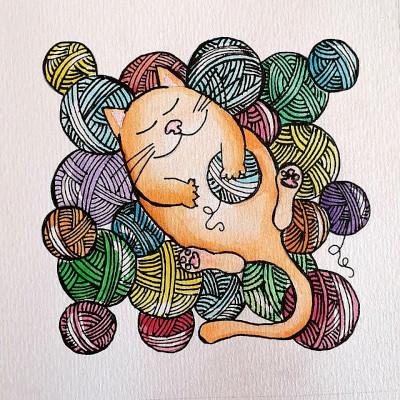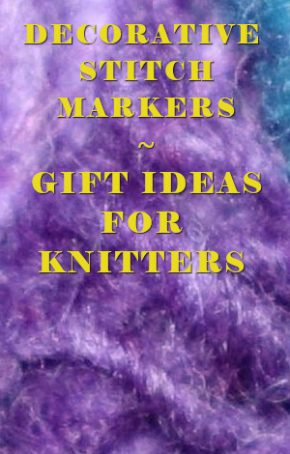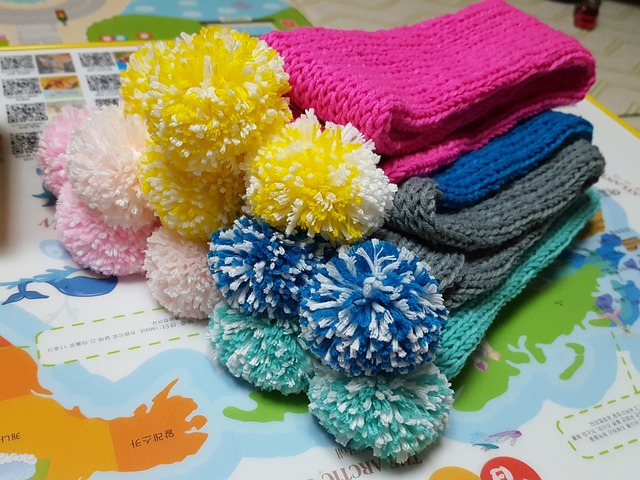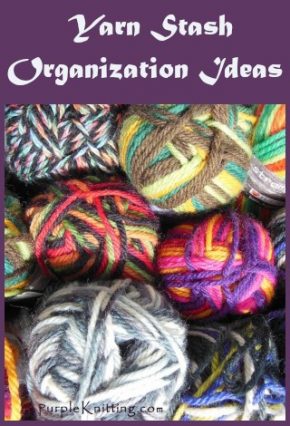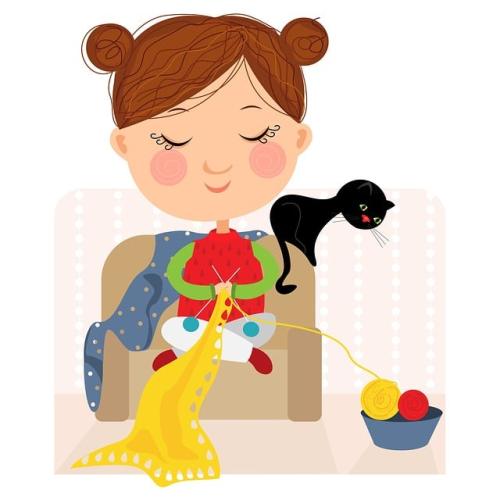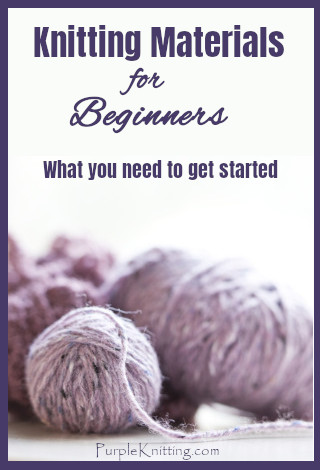
Do you want to learn to knit, but are not sure what you need in the way of knitting materials for beginners?
In this post, you will find out what are the essential tools you need to get started with knitting. I have also included some of the other accessories that will make your life easier.
As with any new craft or hobby, there are always tools and things you need to get started. Knitting is no exception. However, you will pleased to discover that you don’t need much to get going.
Contents
The Basics for Knitting
Knitting Needles
Knitting needles are one of the most basic things needed to get going with this hobby. They come in a wide array of types and sizes.
If you are a beginner then thicker sizes are recommended as they are easier to grip. I suggest that you start with bamboo knitting needles or wooden ones as the yarn does not slip as easily as it does with metal needles.
For more detailed information, take a look at this post which helps you choose the best needles for a beginner. When you are practicing and getting to grips with the basics something like 5mm up to 7mm needles would be ideal.
Yarn
Of course, you will also need some yarn. In the same way that there are many different needles to choose from, so too is there a huge choice of knitting yarns to use.
Again as a new knitter, it is best to choose a thicker yarn – something like a chunky or super chunky weight yarn. I found that the beginners I have helped to learn to knit were more easily able to see how the stitches are formed when using a thick yarn. Also, the project they were making knitted up more quickly which was encouraging for them.
Knitting fibre comes in many different forms – man-made – mostly acrylic, plant and animal-based, and blends of all three of them.
The type of yarn you need will be determined by the pattern and what purpose your creation is going to serve.
Some yarns are more difficult to knit with (like 100% cotton) as they tend to split but with practice, you will soon manage them. Stretchy yarns are best when you first start as it means you can more easily maneuver the fiber the way you need it to go. Acrylic-based yarns are also recommended because they are cheaper and when you’re practising you don’t want to be fearful of wasting resources.
A Knitting Pattern
We all want to learn to knit so we can make things! So one of the basic things you need to get started is a pattern. Fortunately, on the internet, you can find loads of free easy knitting patterns for beginners. Once you have watched the tutorial videos and got the idea of how to do the knit stitch, purl stitch and casting off, you are good to go. You can find help on these skills by clicking “Learn to Knit”
The sites I like to use for patterns are:
Knitting magazines
Sewing Needle with Large Eye & Blunt End
Another essential bit of equipment that you will need is a large eye yarn needle to sew up seams in your project and to weave in the ends to finish off a project. I always make sure I have several on hand as they are easy to lose. Make sure you get one that is not sharply pointed as this will split your work as you use it and become very annoying to use.
Scissors
A small pair of scissors is of course essential. To start with you can always use what you have already but in time you’ll find you will want to have a pair that is solely for your knitting projects.
Other Knitting Accessories You’ll Need as You Progress
When you have made your first project, and have decided that knitting is a hobby that you feel you want to continue with, then it’s time to think about investing in a few more tools and accessories. As you create more projects you’ll find that you need things like stitch markers for more involved patterns, cable needles and stitch holders.
Knitting Kit
One of the quickest and most cost-effective ways to get these extra accessories is to invest in a knitting kit. These generally come with several different tools all stored together in a case which keeps them organized.
In these packs, you will find tools like tape measures, cable needles, crochet hooks for mending dropped stitches, stitch holders, locking stitch markers, knitting gauges, needle point protectors and row counters.
Circular Knitting Needles
Once you get more confident and tackle larger projects, circular knitting needles are helpful and so much more pleasant to use than straight ones. There is nothing worse than trying to knit with lots of stitches packed tightly onto straight needles. After investing in a pair of interchangeable ones I could not believe how much more pleasant it was to knit the baby blanket I was making. The bulk of my knitting was held by the cable and not by my hands and shoulders!
Bags for Knitting Supplies & Projects
Another useful bit of equipment is a dedicated bag in which to store your work-in-progress projects and your knitting supplies. While it is perfectly okay to use any old bag, I have found that the items stored in them tend to get all jumbled up, unless you have a set of pockets for organizing them. These special knitting bags come with combined needle storage and other areas so that your tools each have a place to go. This means that when you want to use some item it’s easy to find. All your equipment is in one place and tidied away when not in use.
So, there you have my list of equipment that I feel beginners need to get started. As you see there are not many supplies that you need to get going. You can add to your collection as you go along.
Once you have kitted yourself out with the basics, you then need to learn the skills to use them – start by learning how to hold the knitting needles, how to make a slip knot (which is your first stitch) and how to cast more stitches onto the needles. To find out how to do this go here
